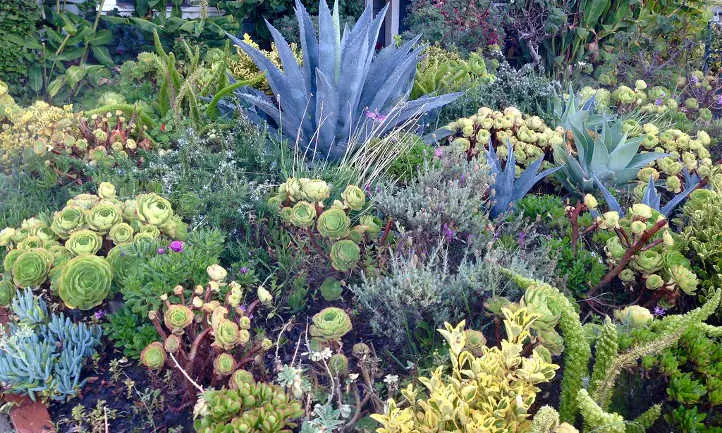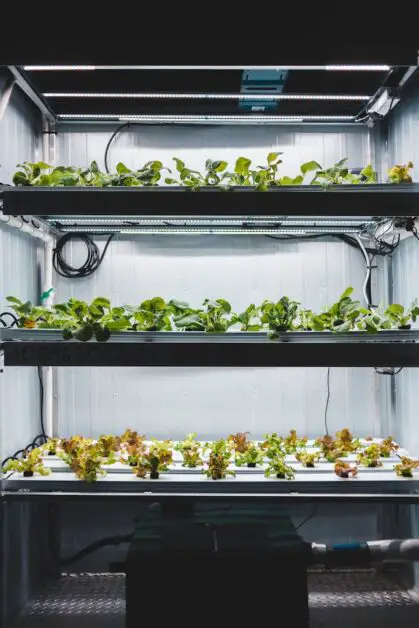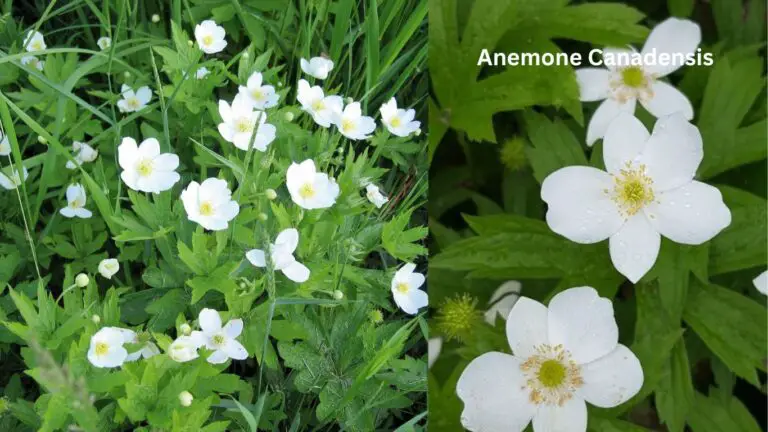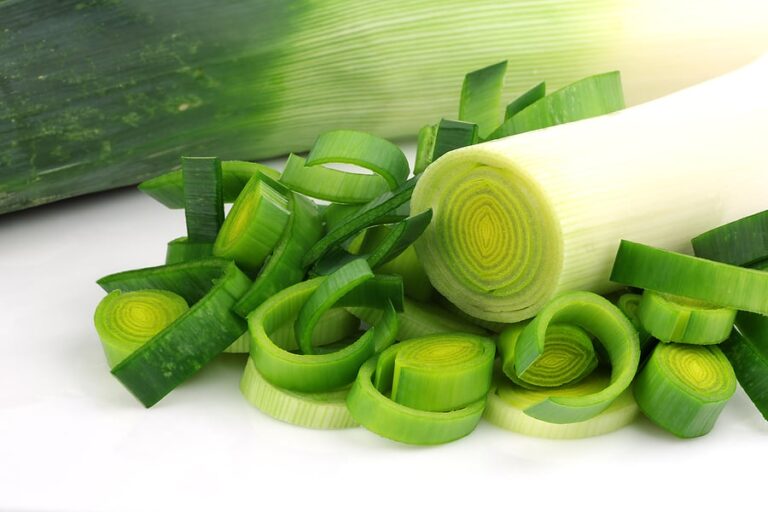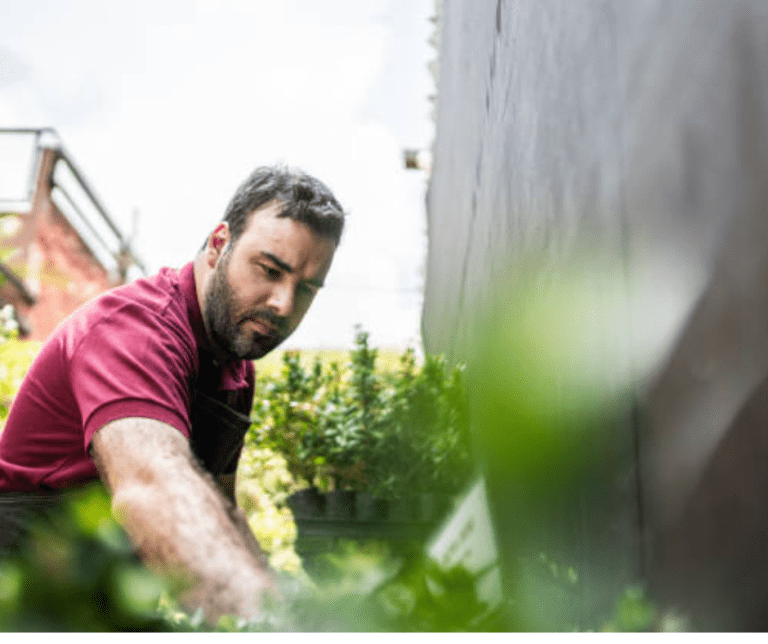35 Xeriscape Wonders for a Drought-Free Garden
Table of Contents
Designing with Succulents: Low-Maintenance and Water-Saving Options for Xeriscaping
Succulents are popular choices for xeriscaping due to their low maintenance and water-saving properties. These plants have adapted to arid environments, making them perfect for gardens that require minimal watering. With their unique shapes, colors, and textures, succulents can add visual interest and variety to any landscape design.
One of the main advantages of designing with succulents is their ability to store water in their fleshy leaves and stems, allowing them to withstand prolonged droughts. This natural adaptation makes them highly resilient and able to thrive in dry conditions with little to no irrigation. By incorporating succulents into your landscape, you can significantly reduce water usage and conserve this valuable resource.
In addition to their water-saving benefits, succulents also require very little maintenance. These plants are known for their ability to thrive in poor soil conditions, making them ideal for gardens with less fertile ground. With proper planting and care, succulents can grow and spread on their own, requiring minimal pruning or fertilizing. This low-maintenance characteristic makes them a great choice for busy gardeners or those looking to minimize the time and effort required to maintain their outdoor spaces.
• Succulents are perfect for xeriscaping due to their low maintenance and water-saving properties.
• Their ability to store water in their leaves and stems allows them to withstand prolonged droughts.
• By incorporating succulents into your landscape, you can significantly reduce water usage and conserve resources.
• Succulents require very little maintenance, thriving in poor soil conditions.
• They can grow and spread on their own, requiring minimal pruning or fertilizing.
• This makes them a great choice for busy gardeners or those looking to minimize effort.
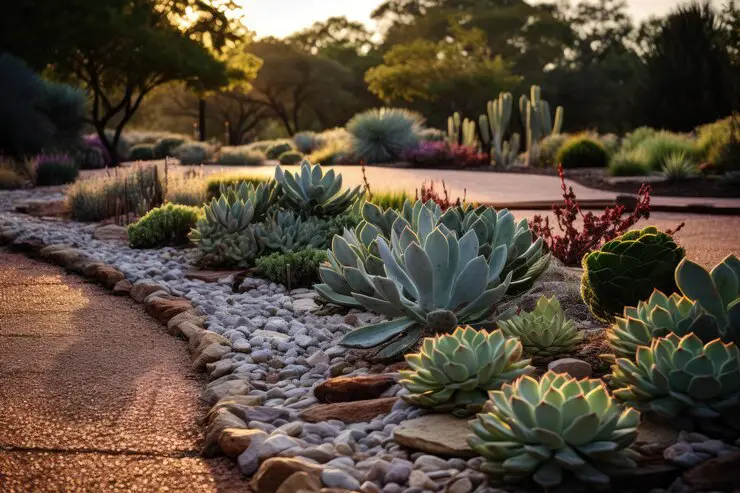
Edible Xeriscaping: Growing Fruits, Vegetables, and Herbs in a Water-Efficient Garden
Edible xeriscaping is a fantastic way to blend the beauty of a water-efficient garden with the satisfaction of homegrown produce. By strategically selecting fruits, vegetables, and herbs that thrive in low-water conditions, you can create a sustainable and rewarding garden that not only conserves water but also provides an abundance of fresh, healthy food.
One of the key considerations in edible xeriscaping is choosing plants that have adapted to arid environments. Cacti and succulents are obvious choices, with prickly pear cactus, agave, and aloe vera being popular options. However, there are also numerous fruits and vegetables that are well-suited to xeriscape gardens. For example, tomatoes, peppers, and eggplants are known for their drought tolerance, while leafy greens like lettuce and kale can thrive with less water than traditional crops. Herbs such as rosemary, thyme, and oregano are also excellent choices, as they tend to be more resilient in dry conditions. By carefully selecting these water-wise plants, you can enjoy the benefits of a lush, productive garden while minimizing water usage significantly.
In addition to plant selection, proper soil preparation and irrigation techniques are vital for the success of edible xeriscaping. Incorporating organic matter into the soil helps improve its water-retention capacity and promotes healthy root development. Mulching is another effective practice that helps conserve moisture by reducing evaporation. Drip irrigation is the most efficient method for watering xeriscape gardens, as it delivers water directly to the roots while minimizing loss through evaporation and runoff. Implementing a timer and monitoring soil moisture levels can further optimize water usage, ensuring that your edible garden receives just the right amount of hydration.
By integrating edible plants into your water-efficient garden, you not only create a visually appealing space but also foster a sustainable approach to food production. Whether you have limited access to water or simply want to minimize your environmental impact, edible xeriscaping offers a practical and rewarding solution. In the upcoming sections, we will delve into the specifics of selecting, planting, and maintaining a variety of fruits, vegetables, and herbs in a water-wise garden. So grab your gardening gear and let’s explore the world of edible xeriscaping together!
• Edible xeriscaping combines the beauty of a water-efficient garden with homegrown produce.
• Select fruits, vegetables, and herbs that thrive in low-water conditions for a sustainable garden.
• Cacti, succulents, tomatoes, peppers, eggplants are well-suited to xeriscape gardens.
• Leafy greens like lettuce and kale can thrive with less water than traditional crops.
• Herbs such as rosemary, thyme, and oregano are resilient in dry conditions.
• Proper soil preparation improves water retention and promotes healthy root development.
• Mulching conserves moisture by reducing evaporation.
• Drip irrigation is the most efficient method for watering xeriscape gardens.
• Implementing a timer and monitoring soil moisture levels optimize water usage.
• Edible xeriscaping fosters a sustainable approach to food production.
| Plant | Type | Water Needs | Sunlight | Soil Type | Special Notes |
|---|---|---|---|---|---|
| Tomatoes | Vegetable | Moderate | Full sun | Well-drained, loamy | Stake for support, mulch to retain moisture |
| Peppers | Vegetable | Low to moderate | Full sun | Well-drained, sandy-loam | Mulch to conserve moisture, space for airflow |
| Eggplant | Vegetable | Low to moderate | Full sun | Well-drained, sandy-loam | Mulch to retain moisture, protect from strong winds |
| Zucchini | Vegetable | Low to moderate | Full sun | Well-drained, loamy | Regular harvesting encourages more fruit production |
| Cucumber | Vegetable | Low to moderate | Full sun | Well-drained, loamy | Provide trellis or support for vertical growth |
| Swiss Chard | Vegetable | Low to moderate | Partial shade to full sun | Well-drained, fertile | Resistant to drought, protect from intense heat |
| Kale | Vegetable | Low to moderate | Partial shade to full sun | Well-drained, fertile | Mulch to retain moisture, harvest outer leaves |
| Rosemary | Herb | Low | Full sun | Well-drained, sandy-loam | Drought-tolerant, prune regularly for bushy growth |
| Thyme | Herb | Low | Full sun | Well-drained, sandy-loam | Drought-tolerant, trim after flowering |
| Lavender | Herb | Low | Full sun | Well-drained, sandy-loam | Drought-tolerant, prune after flowering |
| Sage | Herb | Low | Full sun | Well-drained, sandy-loam | Drought-tolerant, avoid overwatering |
| Strawberries | Fruit | Low to moderate | Full sun | Well-drained, loamy | Mulch to conserve moisture, protect from pests |
| Fig Trees | Fruit | Low to moderate | Full sun | Well-drained, sandy-loam | Drought-tolerant, protect from frost in winter |
| Pomegranates | Fruit | Low to moderate | Full sun | Well-drained, sandy-loam | Drought-tolerant, prune in late winter |
Attracting Pollinators: Creating a Haven for Bees, Butterflies, and Birds in Your Xeris
As gardeners, we have a unique opportunity to not only create beautiful landscapes, but also to support and protect our local ecosystems. By designing our gardens to attract bees, butterflies, and birds, we can play a crucial role in ensuring the health and survival of these important pollinators.
One way to create a haven for pollinators in your xeriscape is by planting a variety of native flowering plants. Native plants have evolved alongside local pollinators, making them ideal food sources and habitats. Choose plants with different bloom times to provide a continuous food source throughout the growing season. Additionally, consider planting a mix of flowers that appeal to a wide range of pollinator species, including different colors and shapes that attract various insects and birds. By providing a diverse and abundant food supply, you’ll attract a greater number and variety of pollinators to your garden.
• Plant a variety of native flowering plants
• Native plants have evolved alongside local pollinators, making them ideal food sources and habitats
• Choose plants with different bloom times to provide a continuous food source throughout the growing season
• Consider planting a mix of flowers that appeal to a wide range of pollinator species
• Include flowers with different colors and shapes to attract various insects and birds
• Providing a diverse and abundant food supply will attract a greater number and variety of pollinators
What is xeriscaping?
Xeriscaping is a landscaping technique that focuses on designing a garden or landscape that requires minimal water usage.
How can I create a haven for bees, butterflies, and birds in my xeriscape garden?
To attract pollinators, you can incorporate native plants that provide nectar and pollen, create sheltered areas with shrubs and trees, provide a water source like a birdbath or small pond, and avoid using pesticides.
What are some low-maintenance and water-saving options for xeriscaping?
Succulents are excellent choices for xeriscaping as they require little water and are easy to care for. Other options include drought-tolerant grasses, native wildflowers, and plants with grey or silver foliage.
Can I grow fruits, vegetables, and herbs in a xeriscape garden?
Yes, you can! Edible xeriscaping allows you to grow a variety of fruits, vegetables, and herbs in a water-efficient manner. Opt for drought-tolerant varieties and employ efficient watering techniques such as drip irrigation.
Why is it important to attract pollinators to my xeriscape garden?
Pollinators, such as bees, butterflies, and birds, play a crucial role in plant reproduction. By attracting them to your garden, you can ensure better pollination, increased fruit and vegetable yields, and overall ecosystem health.
How do native plants help attract pollinators?
Native plants have evolved alongside local pollinators and have developed mutually beneficial relationships. These plants provide the necessary food sources, such as nectar and pollen, that attract and sustain pollinators.
What are some common native plants that attract pollinators?
Examples of native plants that attract pollinators include milkweed, coneflowers, bee balm, goldenrod, lavender, and sage. However, the specific plants will vary depending on your region and the type of pollinators you wish to attract.
Can I still attract pollinators if I use pesticides in my xeriscape garden?
It is best to avoid using pesticides, as they can harm pollinators and other beneficial insects. Instead, focus on creating a natural and pesticide-free environment that encourages pollinators to thrive.
How can I provide water for pollinators in my xeriscape garden?
You can provide water for pollinators by placing shallow dishes filled with water in your garden. It is important to regularly change the water to prevent mosquitoes from breeding.
Are there any specific maintenance tips for attracting pollinators to a xeriscape garden?
Regularly monitor your garden for any signs of pests or diseases, remove any weeds that may compete with your plants, and ensure there is a continuous bloom cycle by incorporating a variety of plants with staggered flowering times.

Ankit Garg is a seasoned writer at South El Monte Hydroponics, blending his passion for agriculture with a penchant for storytelling. With a degree in Agricultural Sciences from a prestigious institution, Ankit’s expertise lies in hydroponics, sustainable farming, and innovative cultivation techniques. His keen interest in exploring the intersection of technology and agriculture has led him to delve deep into the realm of hydroponic farming, where he thrives in uncovering the latest advancements and sharing insights through his engaging prose. Ankit’s dedication to promoting eco-friendly and efficient farming practices through his writing has earned him recognition within the agricultural community and beyond.

